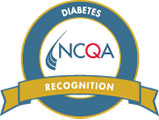To Buy Chloroquine Online Visit Our Pharmacy ↓
 The Selected Blog Title Is: Chloroquine: Can It Be the Answer to Drug Resistance in Malaria?
The Selected Blog Title Is: Chloroquine: Can It Be the Answer to Drug Resistance in Malaria?
The Rise of Drug ResistanceDrug resistance has emerged as a major challenge in the fight against malaria, threatening the effectiveness of conventional treatments. Over the years, the Plasmodium parasite, which causes malaria, has developed the ability to adapt and survive despite medication. This has led to the rise of drug-resistant strains of the parasite, rendering previously effective drugs ineffective. The global spread of these drug-resistant strains has further exacerbated the problem. In an effort to combat this issue, researchers have turned their attention to chloroquine, an antimalarial drug that was widely used in the past but fell out of favor due to the emergence of drug resistance. Despite its setbacks, recent studies have reignited interest in chloroquine, suggesting that it may hold promise in treating drug-resistant malaria. By understanding the rise of drug resistance and exploring the potential of chloroquine, we can better address the challenges posed by this deadly disease.
The Potential of Chloroquine
Chloroquine has emerged as a potential solution in combating drug resistance in malaria. As a renowned antimalarial drug, its effectiveness and low cost make it an attractive option for malaria treatment. Chloroquine acts by accumulating in the parasite-infected red blood cells and effectively inhibiting the growth of the malaria parasite. Additionally, it has been found to possess immunomodulatory properties, enhancing the host immune response against the parasite. However, the use of chloroquine has faced challenges due to the emergence of resistant strains of the malaria parasite. Despite this, ongoing research efforts aim to optimize the use of chloroquine and develop novel strategies to overcome resistance. Continued studies are needed to harness the full potential of chloroquine and utilize it as an effective weapon against drug-resistant malaria.
Mechanism of Action
The mechanism of action of chloroquine, a widely recognized antimalarial drug, involves several key steps. First, chloroquine enters the red blood cell, which is the target site for malaria parasite growth. Inside the cell, chloroquine binds to heme, a toxic byproduct of hemoglobin digestion by the parasite. This binding prevents the breakdown of heme into its nontoxic components, leading to the accumulation of toxic heme in the parasite. As a result, the parasite's digestive system becomes overloaded with toxic heme, causing the parasite's death. Additionally, chloroquine is believed to interfere with the parasite's ability to detoxify itself from other harmful molecules, further enhancing its efficacy. By targeting multiple aspects of the parasite's survival, chloroquine has proven to be an effective weapon against malaria.
Efficacy in Treating Malaria
Chloroquine has long been recognized for its effectiveness in treating malaria. This antimalarial drug works by accumulating within the erythrocytes of infected individuals, preventing the growth and replication of the malaria parasite. The mechanism of action involves inhibiting the heme polymerase enzyme and interfering with the parasite's ability to break down hemoglobin. Chloroquine has been widely used as a first-line treatment for malaria, particularly in regions where the malaria parasites have not yet developed resistance to the drug. However, with the emergence of drug-resistant strains of malaria, the efficacy of chloroquine has diminished in certain parts of the world. Nonetheless, in areas where the malaria parasites remain susceptible to chloroquine, it continues to be an effective and affordable treatment option. Efforts are currently underway to address the challenge of drug resistance and to optimize the use of chloroquine in malaria control programs.
Challenges and Limitations
The use of chloroquine as a potential answer to drug resistance in malaria comes with its own challenges and limitations. One of the main challenges is the emergence of resistance to chloroquine itself. Over the years, certain strains of the malaria parasite have developed resistance to the drug, rendering it ineffective in some cases. This highlights the need for continuous monitoring and surveillance of drug resistance patterns to ensure that chloroquine remains an effective treatment option. Another limitation is the need for proper dosage and administration. If not taken correctly, chloroquine can result in toxicity and adverse effects. Additionally, the availability and affordability of chloroquine can also pose limitations, especially in resource-limited settings. Despite these challenges and limitations, chloroquine still holds promise in the fight against drug resistance in malaria, but further research and efforts are needed to address these issues and optimize its use.
Future Perspectives and Conclusion
The continuous rise of drug resistance in malaria poses significant challenges and limitations in the fight against this deadly disease. While chloroquine has shown potential as a solution, it is not without its drawbacks. One major challenge is the increasing resistance of Plasmodium parasites to chloroquine, rendering it less effective in treating malaria infections. Additionally, the availability and accessibility of chloroquine in regions heavily affected by malaria may be limited, hindering its widespread use. Moreover, the side effects associated with chloroquine use, such as nausea, headache, and potential toxicity, need to be carefully monitored. Ensuring the proper dosage and administration of chloroquine is also crucial to avoid treatment failures and further promote drug resistance. Despite its promise, these challenges and limitations must be considered when exploring chloroquine as a potential answer to drug resistance in malaria.
![]()








 We are now located at
We are now located at


